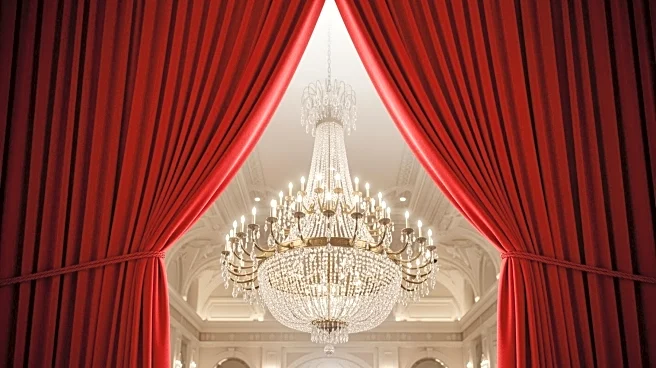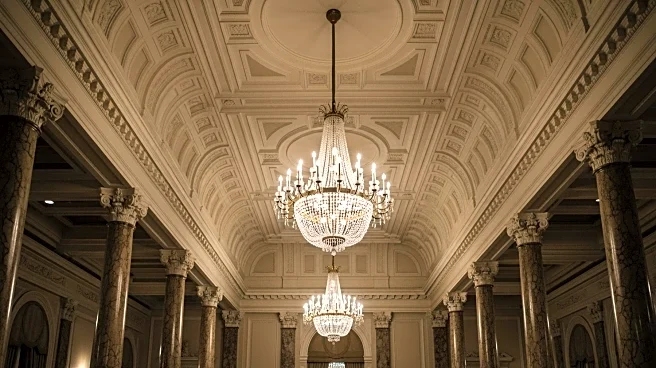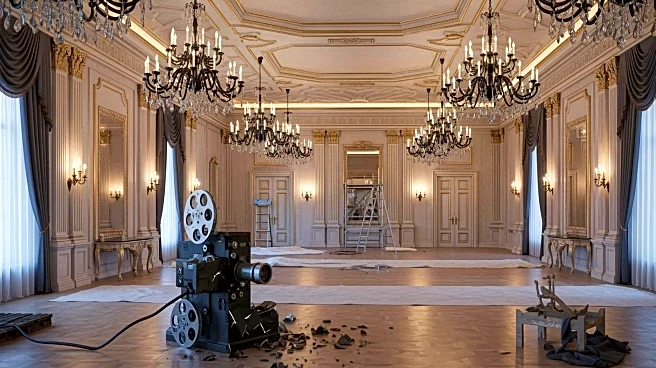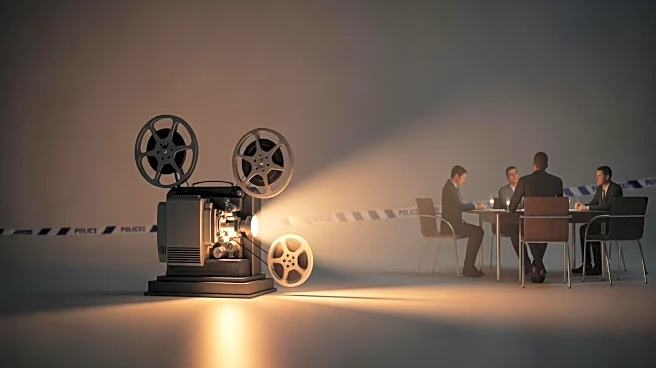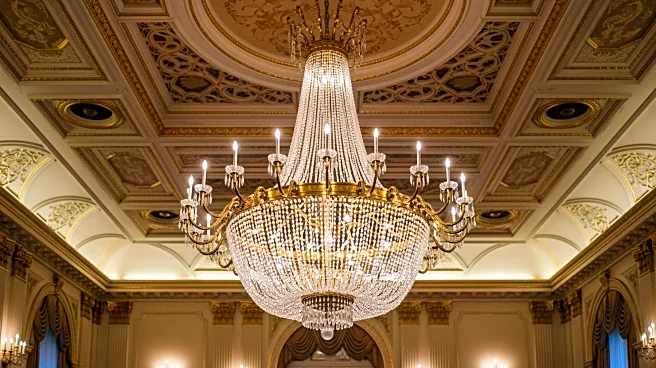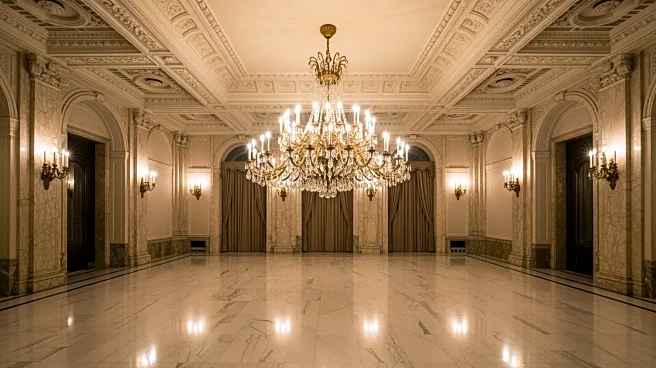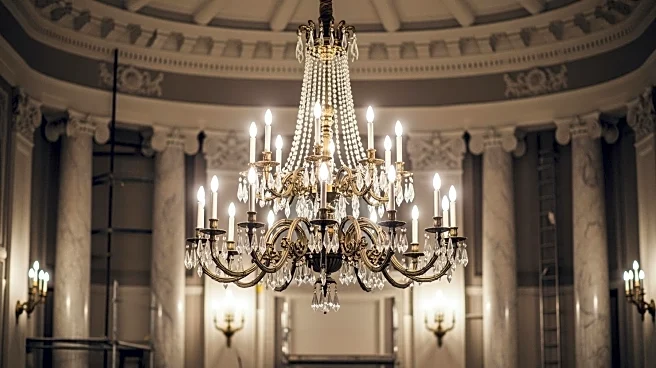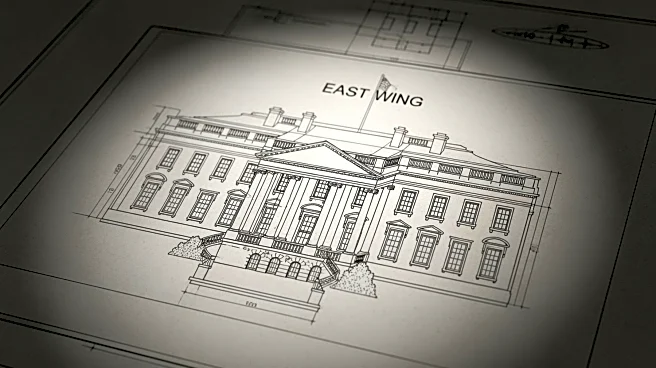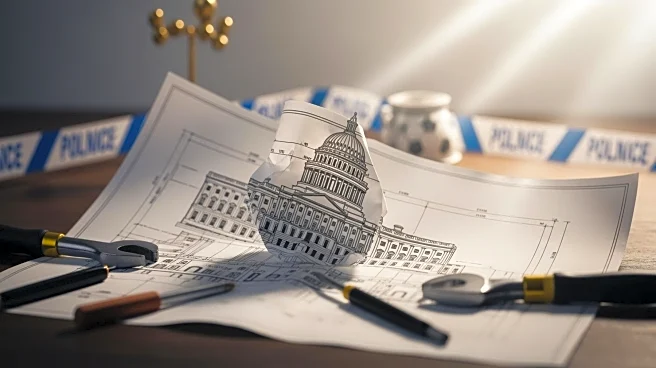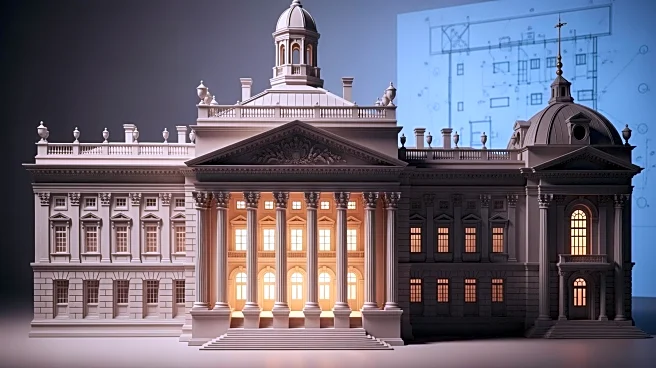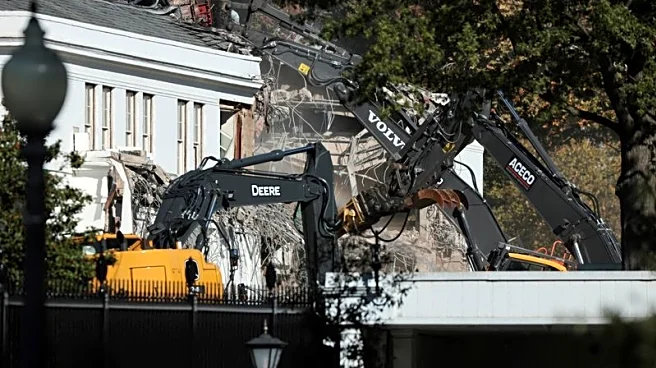What's Happening?
The White House Family Theater, a historic venue within the East Wing, has been demolished to make way for a new $300 million ballroom as part of President Trump's renovation plans. Originally converted
from a cloakroom in 1942 during Franklin D. Roosevelt's presidency, the theater has served as a private screening room for presidents and their families. Over the years, it has hosted a wide range of films, from newsreels to Hollywood blockbusters. The theater was known for its intimate setting and had undergone several renovations, the most recent being in 2004 under First Lady Laura Bush. The demolition marks the end of an era for a space that has been a significant part of presidential history.
Why It's Important?
The demolition of the White House Family Theater signifies a shift in the cultural and historical landscape of the presidential residence. The theater has been a unique feature of the White House, offering presidents a private space to engage with popular culture and unwind. Its removal to accommodate a new ballroom reflects changing priorities in the use of White House space. This development may impact how future presidents interact with cultural media and could alter the traditional functions of the East Wing. The decision has sparked discussions about preserving historical elements versus modernizing the presidential residence.
What's Next?
As the East Wing undergoes redevelopment, there is speculation about whether a new theater will be included in the plans. While the White House has not confirmed any details, there is hope among historians and cultural enthusiasts that a new screening room will be part of the renovations. The completion of the ballroom and any additional facilities will likely influence how future administrations utilize the East Wing. Stakeholders, including historians and cultural preservationists, may advocate for the inclusion of a new theater to maintain the tradition of film screenings at the White House.
Beyond the Headlines
The removal of the White House Family Theater raises questions about the balance between preserving historical sites and adapting to contemporary needs. The theater was not just a place for entertainment but also a cultural touchstone that reflected the personal tastes and interests of various presidents. Its demolition could lead to a reevaluation of how historical spaces are valued and maintained within the White House. This event may also prompt discussions on the broader implications of altering historical landmarks in favor of modernization.
